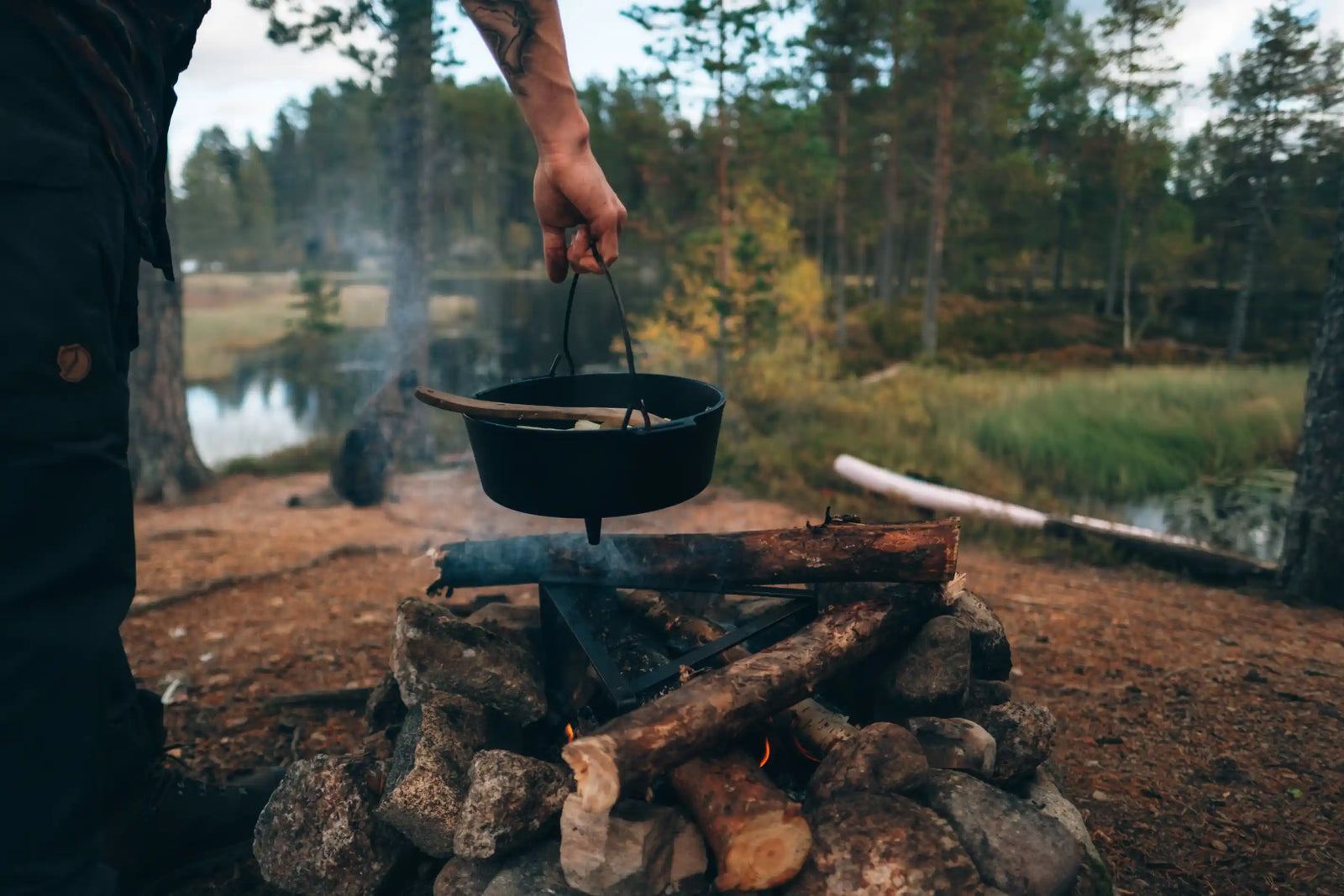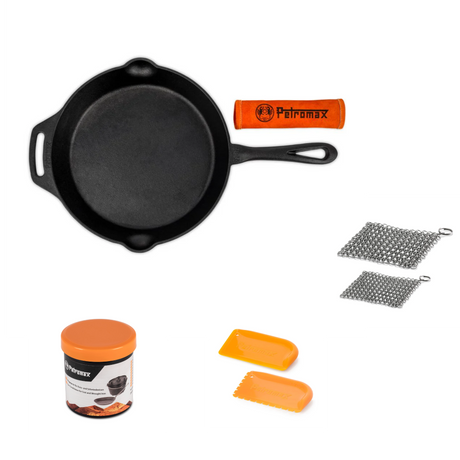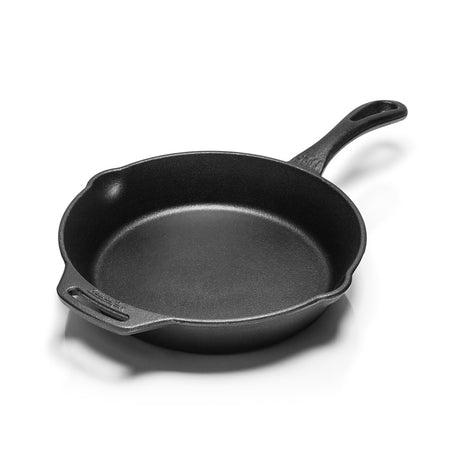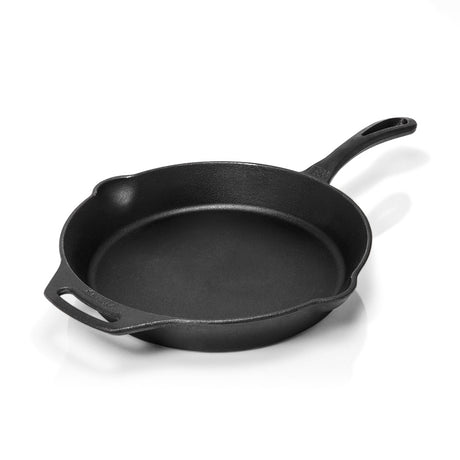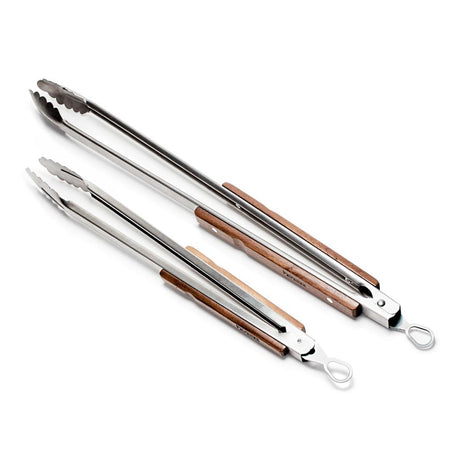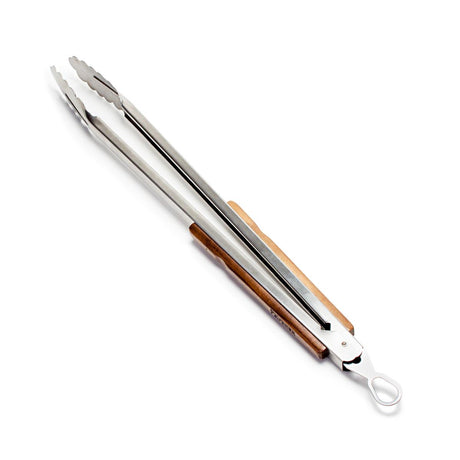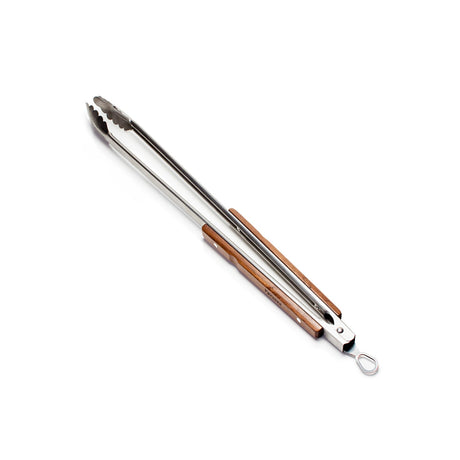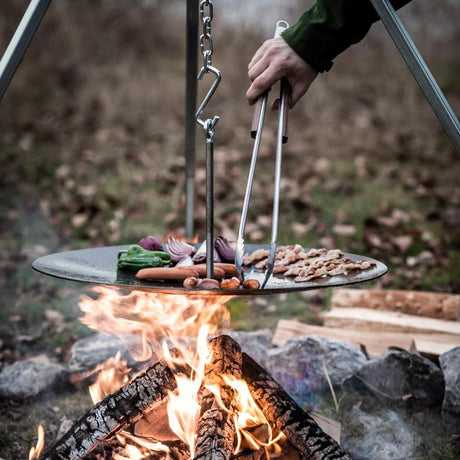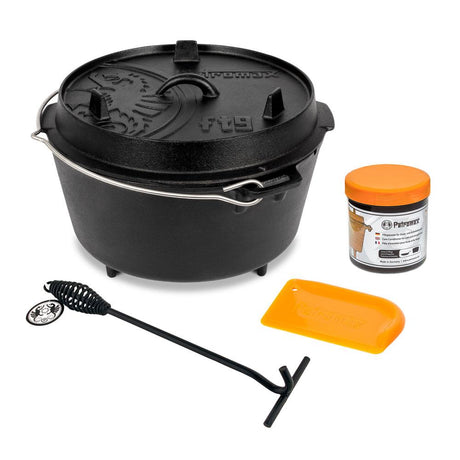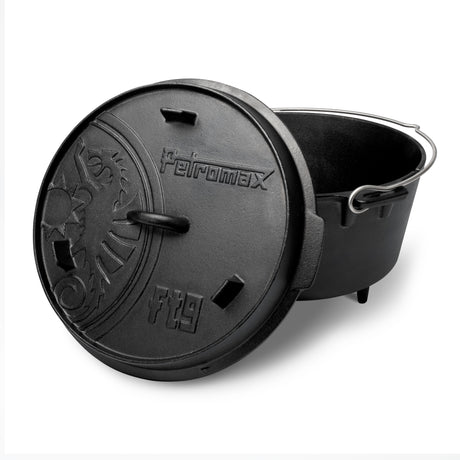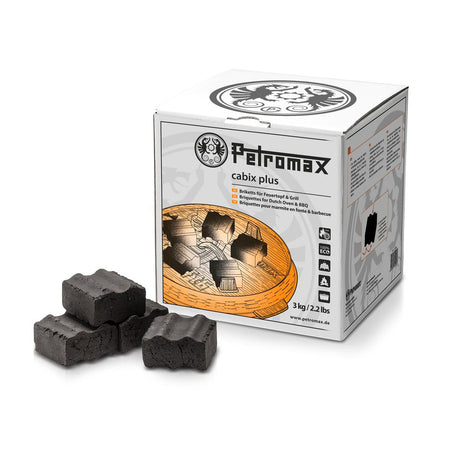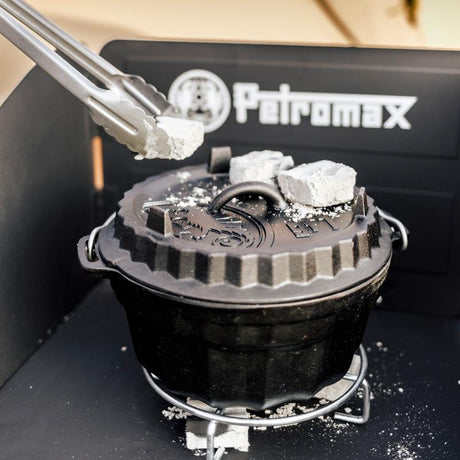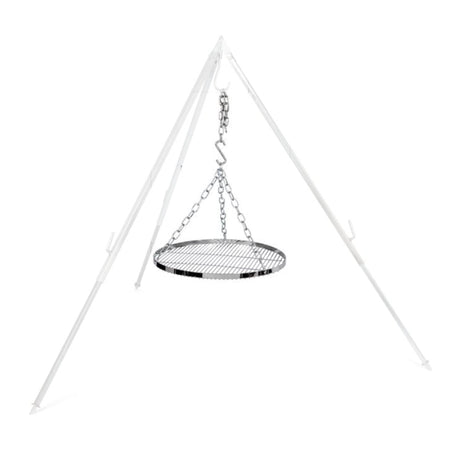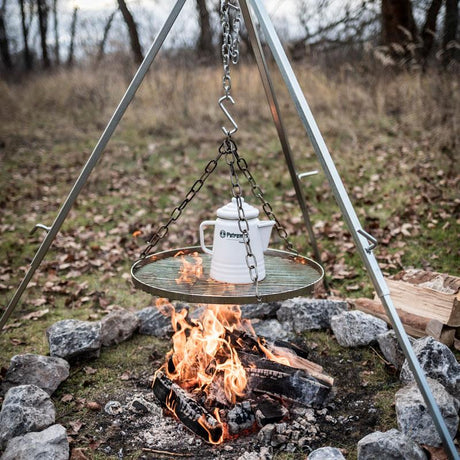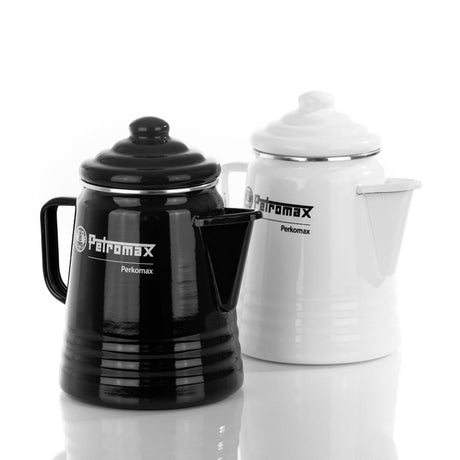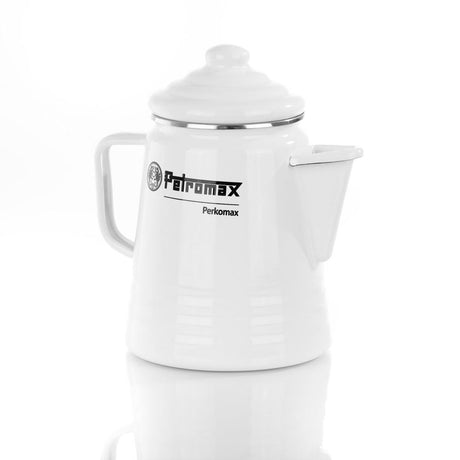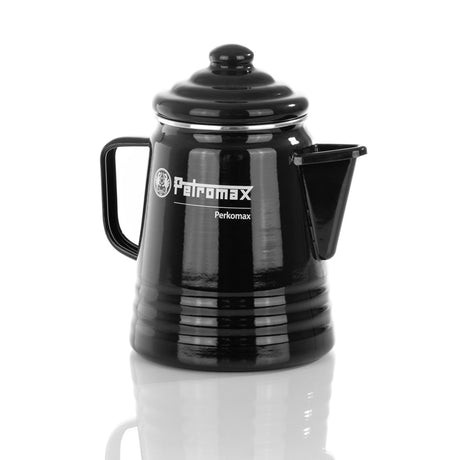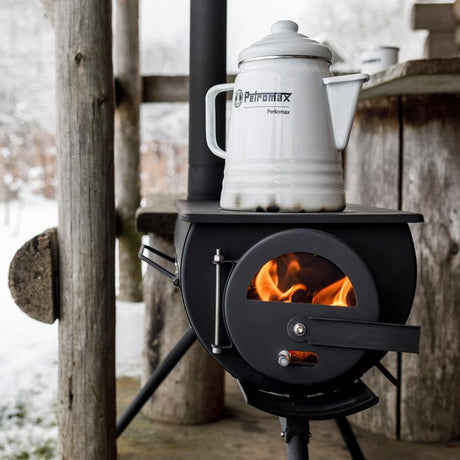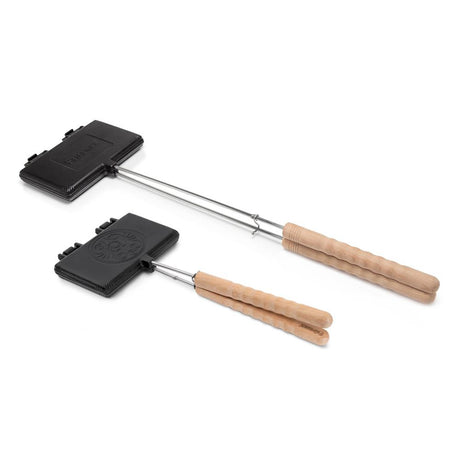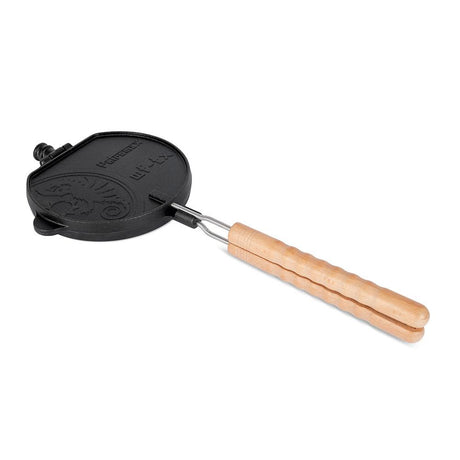Cooking is one of the most basic skills we have. But what happens when electricity and gas are not available?
In recent years, many people have started to look at the issue of independence again - not out of romanticism, but out of common sense. Cooking without electricity is not an adventure trend, but a practical skill that provides security. And with the right equipment, it works better than many people think. Cooking without electricity has long been more than just an emergency situation - it is a trend towards independence, sustainability and self-sufficiency. Whether it's a power cut, an outdoor adventure or simply the desire for more self-sufficiency: anyone who knows how to cook without electricity has a clear advantage.
Petromax has stood for fire culture, cast iron and independent outdoor living for over 100 years. The brand specializes in products that work without electricity - because they are based on principles that have been tried and tested for centuries: Fire, embers, air and time.
Table of contents
Why cooking without electricity is relevant today
Ways to cook without electricity
Petromax products for self-sufficient cooking
Safety and preparation when cooking without electricity
What you should look out for when buying
Conclusion
Why cooking without electricity is relevant today
We are used to everything working: Stove on, water hot, lights on. In a world where almost everything runs on electricity, we quickly realize how dependent we are on the power grid. The stove, the fridge, even the kettle - they all need energy to work. If the power goes out, it's not enough just to have food. Without a heat source, supplies remain unused.
Cooking without electricity is therefore not a romantic idea from the outdoor scene, but part of modern crisis preparedness. Anyone who has experienced how a city suddenly finds itself without electricity knows that food and heat quickly become a priority.
At the same time, interest in alternative lifestyles is growing. Many are discovering cooking without electricity as a conscious alternative. People are building small fireplaces in their gardens or cooking with simple means when traveling. What used to be an emergency solution is now becoming a conscious decision: less dependence, more control.
Cooking without electricity means understanding how heat works again. How embers behave, when a fire is ready and when it is not. And what happens when technology is not the most important thing, but the result - a hot, good meal.
Ways to cook without electricity
There are various ways to prepare food without electricity. Some require little preparation, others are more complex but more efficient. Each method has its own advantages - and limitations.
Cooking over an open fire
The classic campfire is the most original form of cooking. It requires hardly any equipment: a few stones, a fire bowl or a small pit, some wood, kindling - nothing more.
When the flames have burned down, embers are created. This even, calm heat is ideal for cooking. A grate, a fire bridge or a hanging rack make it possible to place pots and pans safely.
Open fires are flexible, but also dependent on the weather. Wind, moisture or uneven ground can make cooking difficult. On the other hand, it offers maximum independence and works with natural fuels that are available almost everywhere.
Wood or coal stoves
These systems are a further development of the campfire. They direct air into the combustion chamber and therefore use the fuel much more efficiently. Wood gasifiers and rocket stoves generate high temperatures with minimal consumption.
These stoves are particularly useful if you want to heat something in a short space of time - such as water, coffee or simple meals. They are compact, clean and ideal for the balcony, garden or emergency kitchen.
Gas and cartridge cookers
Gas provides precise, clean heat and is ready to use immediately. One press of the igniter and the flame burns constantly. These systems are ideal for situations where you want to prepare something quickly.
The disadvantage: gas is finite. Cartridges need to be purchased and stored safely. Nevertheless, gas is a practical addition, especially for short emergencies or mobile use.
Fireplace and wood stove
Many houses still have a fireplace or wood-burning stove. With cast-iron cookware, the available heat can be put to good use.
An oven with a hotplate or open area above the embers can heat water or cook simple dishes. If you have the opportunity, you should test this system regularly - it works excellently if you know the heat distribution.
Solar energy
Solar stoves use reflective surfaces to concentrate sunlight and heat food. They are sustainable, noiseless and require no fuel.
However, they are weather-dependent and therefore more of a supplement than a main solution. In summer, however, they can be a sensible alternative to save energy.
Improvised systems
Cooking can also be done with simple means. Three bricks as a support, a pot on top, a fire underneath - it works. Such solutions are not ideal, but they do show: With a little planning and an understanding of heat, a meal can be prepared almost anywhere.
Petromax products for self-sufficient cooking
Petromax has had the topic of independence at the heart of its product development for decades. We have specialized in equipment that works independently of electricity. The special feature: Everything is based on principles that have been tested in practice and further developed over decades. Cast iron, stainless steel and smart designs ensure efficiency and durability - whether camping, in the garden or in a real emergency situation. Here is an overview of which equipment is suitable for which scenario.

Rocket stove - the must-have for independent cooking
The rocket stove is the key tool for anyone who really wants to cook independently. The rocket stove uses the chimney principle: air flows in from below, flames are drawn upwards and concentrate directly under the cookware. This creates intense heat while keeping fuel consumption to a minimum.
This system was originally developed for regions where fuel is scarce - today it is one of the most efficient solutions for self-sufficient cooking. You can generate intense heat from twigs or branches in no time at all. Thanks to its robust insulation, the heat stays where it is needed - safe enough to even use on a table. If you want to be prepared for power cuts or life outside, this stove is a must-have.
➡️ To the Petromax rocket stove rf33
Tip: In the reviews of the rocket stove set rf33 you will find many practical pictures that show how versatile the system is.
Dutch Oven - cast iron with character
The Dutch oven is one of the most versatile tools you can own. It is suitable for stews, bread, braised dishes, roasts or cakes.
The thickness of the material distributes the heat evenly and the lid can also absorb embers to cook the dish from above.
What makes it special is that it improves with every use. The surface forms a natural patina that acts as a non-stick layer and preserves flavor. This makes the Dutch Oven a personal piece of cooking history for years to come.
The advantages of the Petromax Dutch Oven:
The Petromax Dutch Oven is a classic for self-sufficient cooking. Thanks to the factory-baked surface, it is ready to use immediately - no baking necessary. The fine-pored structure ensures a natural non-stick effect, even heat distribution and succulent results. The lid can be used as a pan and is shaped so that embers and briquettes rest securely on top. The Dutch oven works in the fire, on the grill, in the Atago or on the stove - maximum flexibility wherever you cook.
Atago - versatile, compact, efficient
The Atago is a versatile cooking system that combines a fireplace, grill and oven in one. It can be operated with wood, briquettes or coal and is ready for use in seconds.
The double-walled design keeps the heat concentrated inside, which means that fuel is used efficiently. Thanks to the folding mechanism, the Atago is easy to transport and store. In combination with the Dutch oven or a fire pan, it becomes a fully-fledged outdoor kitchen.
Fire bridge - the stable outdoor kitchen
The fire bridge transforms every fireplace into a complete outdoor kitchen. Three hooks and a height-adjustable grill grate allow cooking, grilling and keeping warm at the same time.
The coated steel frame is stable, can be set up quickly and is easy to dismantle after use. Ideal for longer evenings by the fire - and can be combined with the Petromax kettle hook.
Light, warmth & safety
If you want to cook independently, you also need light. The legendary HK500 provides over 400 watts of bright light - completely without electricity. Petroleum is gasified under pressure and produces a warm, even glow.
Its heat-resistant glass cylinder, robust construction and German craftsmanship make it a reliable source of light in any weather - and can even be expanded into a small stove or heater if required.
Safety and preparation when cooking without electricity
Anyone working with an open fire should always act with caution. The most important rules are easy to remember - and make the difference between control and risk.
Fire needs air, fuel and space. Make sure that your cooking area is stable and that there is no material nearby that could catch fire. Only use dry wood or coal, not liquid fuels. If you are cooking outdoors, always have some water or sand ready to extinguish embers.
The choice of location also plays a role. Areas sheltered from the wind make cooking easier and prevent sparks from flying. With gas stoves, good ventilation is crucial - especially if you are cooking under a roof or in a tent.
Preparation involves more than just the equipment. It makes sense to have a small supply box: Fuel, fire steel or matches, a sturdy pan, a pot with a lid and durable food. This way you are ready to go even if the power goes out at short notice.
The most important thing is routine. If you cook with fire regularly, you will automatically develop a feeling for safety and heat distribution - and won't have to think in an emergency.
What you should look out for when buying
Cooking without electricity only works if the equipment and fuel are compatible. When buying, you should consider a few points in order to remain independent in the long term.
Firstly, it is important to consider how many people you are cooking for. A small stove is enough for one or two meals, but if you want to feed a family, you need more space and power. The dishes also play a role: stews and soups are easier to prepare than dishes with several components.
Think about which fuels you prefer. Wood is natural and available almost everywhere, but requires some practice. Charcoal is more durable and easier to dose. Gas is convenient but has a limited shelf life. It can be useful to combine several systems - such as fire for longer meals and gas for quick meals.
Pay attention to material and stability. Cast iron and stainless steel are durable and heat-resistant. Thin metal sheets or aluminum are light, but cannot withstand extreme heat. Good equipment lasts for decades, not just one season.
Safety is also important. Stoves and fireplaces should be stable, pots sturdy and equipped with suitable handles. Equipment that gives you confidence automatically ensures smoother processes.
If you think and prepare in good time, you won't have to improvise in an emergency - you can simply cook.
Conclusion
Cooking without electricity is not a step backwards, but a return to functioning craftsmanship.
With the right equipment, a little practice and the knowledge of heat and materials, you are independent - in everyday life, when traveling or when it really matters.
Petromax provides the right tools for this: robust Dutch Ovens, efficient stoves and well thought-out systems for every scenario.
This way, independence is not just a theory, but something tangible - fire on, pot on, done.
